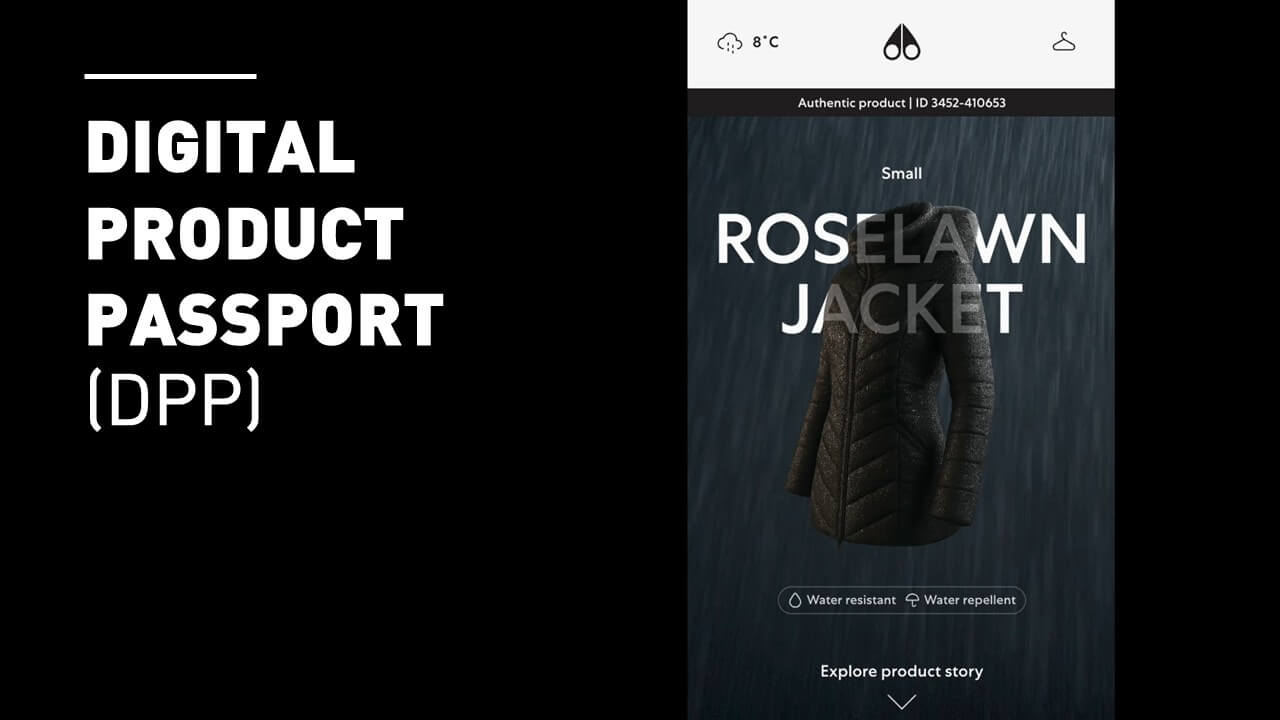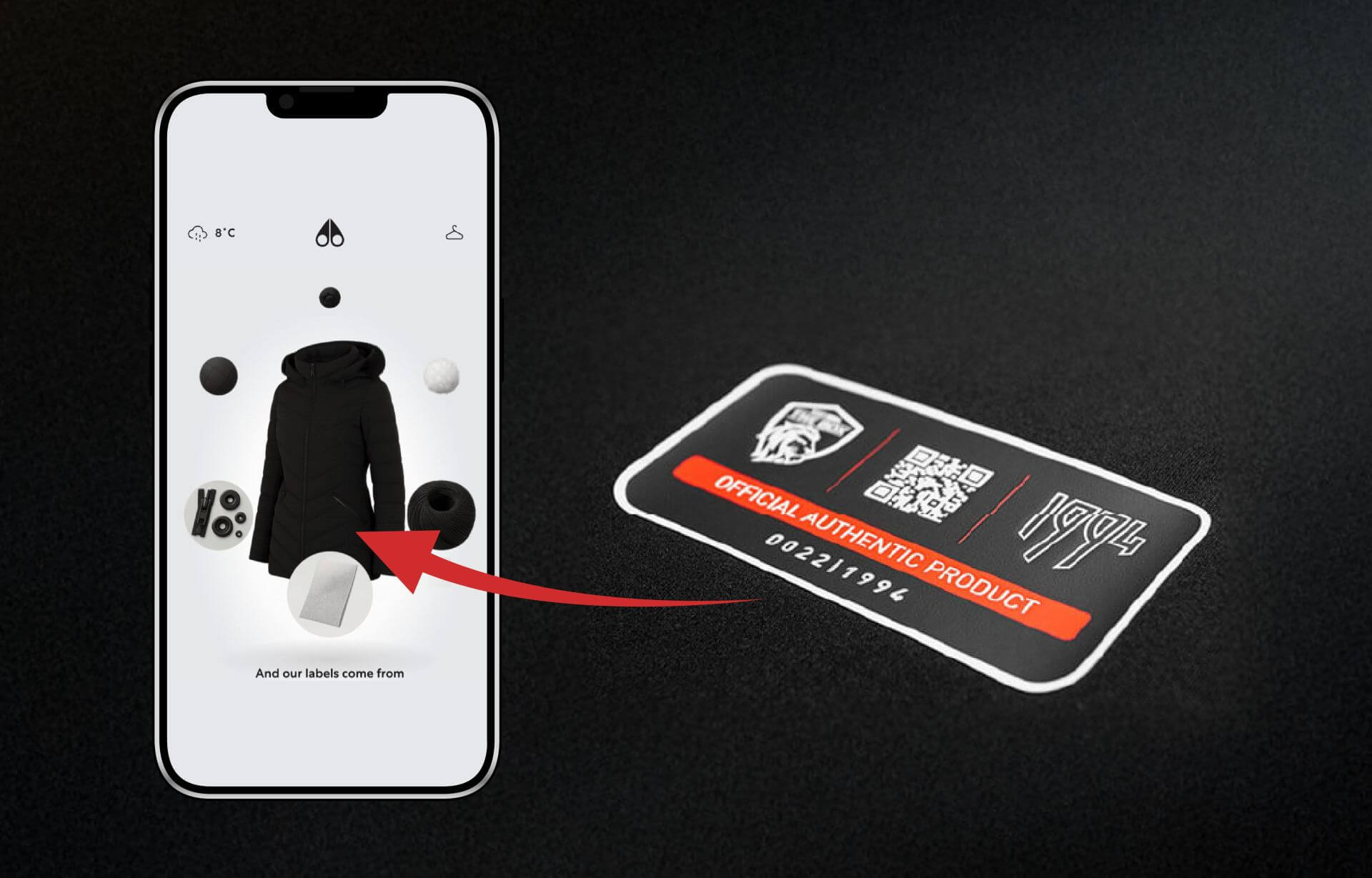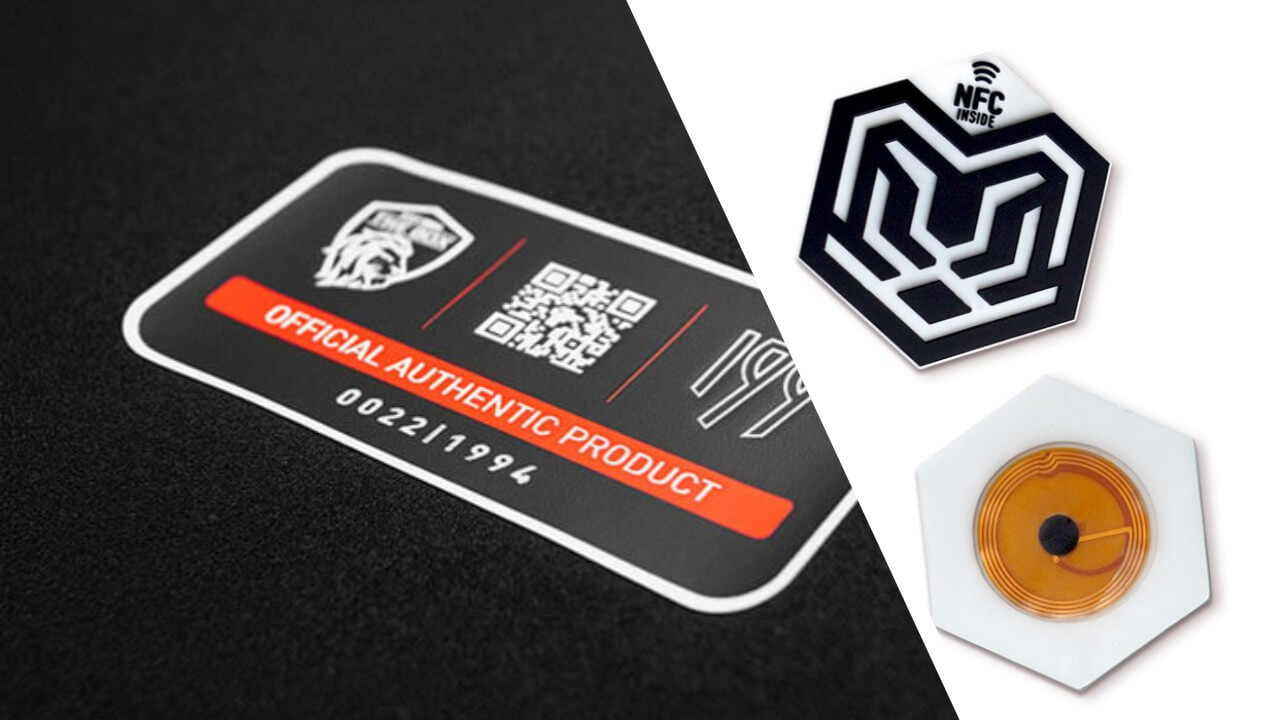What if every piece of clothing you made could tell its story – from the fibres it’s woven with to how it should be recycled? And what if the EU was about to make that story mandatory, with penalties for brands that can’t tell it?
If you're manufacturing or selling textiles in the EU, you're about to face one of the most significant shifts in the industry: the Digital Product Passport (DPP) will soon become mandatory.
That means every product will need a digital identity – one that tracks material origins, carbon footprint, care, and circularity.
By the end of this article, you’ll know exactly how to implement the EU’s Digital Product Passport (DPP) in textiles without disrupting your design, production flow, or brand aesthetics.
We’ll cover the core requirements under EU regulations, the most common implementation challenges, and a proven, real-world solution: smart heat transfers that turn your labels or logos into interactive DPP access points.
What Is the Digital Product Passport – and Why Does It Matter?

The Digital Product Passport is a digital twin of your physical product. It travels with it, telling the full story – accessible via scan or tap.
It enables transparency on:
- Material origins and composition
- Environmental impact (e.g. CO₂ footprint)
- Care, repair, and reuse guidance
- Recycling and end-of-life options
⚠️ Warning: The DPP isn’t optional – it will be mandatory.
The DPP is a key part of the EU Strategy for Sustainable and Circular Textiles, and early adopters won’t just stay compliant – they’ll position themselves as transparent, circular, and future-focused brands.
EU Digital Product Passport Requirements for Textiles: What You Need to Know
Under the Ecodesign for Sustainable Products Regulation (ESPR), textile DPPs must contain:
- Product identification (name, category, unique ID)
- Material composition (fibres, percentages, origins)
- Environmental footprint (carbon, water impact)
- Care, repair & reuse instructions
- End-of-life guidance (recycling, disposal options)
Access Requirements:
- Must be physically accessible on the product (QR code, NFC chip, or equivalent)
- Must be usable without special apps
- Data stored in a secure, interoperable format
Penalties for Non-Compliance:
- Possible sales bans, recalls, and fines (set by each EU member state)
Official Resources:
EU Strategy for Sustainable and Circular Textiles
Why Physical Accessibility Is Critical for DPP Compliance

Most sustainability data fails because it’s buried in apps or backend systems that consumers never use.
⚠️Your logo can do more: make it the launchpad for digital engagement.
Smart heat transfers put the passport right where the consumer interacts – on the product.
How Smart Heat Transfers Turn Logos into DPP Access Points
 Heat transfers are already standard in textile branding – so why not make them smarter?
Heat transfers are already standard in textile branding – so why not make them smarter? By embedding QR codes or NFC chips into heat transfer labels and managing them via the CNCT platform from r-pac, you can unlock digital connectivity directly on the product.
Here's how it works:
- Define the experience: Decide what consumers see – carbon footprint, sourcing info, care tips, brand story, certifications, etc.
- Embed the tech: We integrate a QR code or programmable NFC chip into the heat transfer, discreetly within your logo or label.
- Engage the consumer: A simple scan or tap connects them to a fully branded, interactive experience powered by the CNCT platform.
Your benefits:
✅ No disruption to your production flow
✅ No compromise to design aesthetics
✅ Instant transparency + long-term value
Why Smart Heat Transfers Are the Smartest DPP Solution

✔️ Compliance with upcoming EU regulations
✔️ Better user experience with intuitive, product-level access
✔️ Stronger brand storytelling on circularity and sustainability
✔️ Global scalability powered by r-pac’s CNCT platform
DPP-Ready Heat Transfer Examples in Action
Here are two standout examples from our portfolio that show how physical branding and digital transparency go hand in hand:
1. 3D SILICONE | MULTILEVEL CARVED
3D SILICONE | MULTILEVEL CARVED is a premium heat transfer with multilevel carving and the option to integrate a scannable QR code. It combines elevated design with digital access, making your logo both visual and functional.
A great choice for fashion labels and special editions that demand design integrity and digital access.
3D MOULDED SILICONE | NFC is a multi-layer heat transfer with a built-in programmable NFC chip. End users can simply tap their phone to access product origin, care guides, or exclusive content.
Perfect for smartwear, performance apparel, or forward-thinking fashion brands.
Additional Smart Heat Transfer Options for Textile Brands
We offer a wide range of smart heat transfer options – tailored for different product types, use cases, and branding requirements. Whether you need ultra-flat, stretchable, reflective, or eco-conscious transfers – we’ll help you find the right fit for your DPP strategy.
Real-World Use Cases
Smart heat transfers make the DPP real across multiple categories:
- Pro Sportswear: Team logos that reveal environmental impact
- Fashion Labels: Labels showing CO₂ footprint and Fairtrade info
- Workwear: Built-in access to safety specs and recycling instructions
Imagine:
- A fan scans a jersey to learn how it’s made.
- A worker taps their uniform for repair tips.
- A shopper confirms your brand’s sustainability claims in-store.
That’s real, usable transparency – on every product.
Your Technology Partner for DPP in Textiles: r-pac, CNCT + dekoGraphics

You don’t need to reinvent the wheel. We’ve done the heavy lifting so you can plug into a proven platform.
As part of r-pac, we provide full access to the CNCT platform, including:
✅ A robust digital content management platform
✅ Secure tag integration and serialization
✅ Global production + logistics support
✅ dekoGraphics expertise in heat transfer branding
From pilot to scale – we’re with you end to end.
FAQ – Digital Product Passport (DPP) in Textiles
What is a Digital Product Passport in one sentence? The DPP is your product’s digital twin – containing key information about origin, impact, care, and circularity.
Is the DPP really mandatory? Yes. In the EU, the Digital Product Passport will become mandatory for many textile products starting in 2027.
How can I implement the DPP in my textile? By embedding QR codes or NFC chips into your heat transfer labels – applied like any regular logo without changing your production process.
What do I need technically? You’ll need a branded label with an integrated chip or code – plus a platform to manage and display the data. We provide both.
What’s the benefit of working with r-pac and dekoGraphics? You get an all-in-one solution: smart branding technology, global production support, a certified platform, and personal guidance – all from one partner.
✅ Quick Check: Is Your Product Ready for the Digital Product Passport?
Ask yourself the following questions. If you can check all of them, you're on the right track:
🔲 Do you know what information your DPP needs to contain (materials, CO₂ data, recycling info, etc.)?
🔲 Do you have a solution to make this information digitally accessible directly on the product?
🔲 Is your branding prepared – e.g. with integrated NFC or QR technology?
🔲 Do you have a clear process for production, content updates and data management?
🔲 Are you using a platform that allows you to manage and scale your DPPs securely?
If you're unsure about any of these – let’s talk. We’re here to help you develop your DPP strategy.

Get DPP-Ready Before EU Deadlines Arrive
The Digital Product Passport isn’t just another regulation – it’s a shift toward transparency that will define the textile industry’s future.
Until now, DPP compliance may have seemed complex, with uncertainties around technology, data management, and integration. Now you’ve seen how smart heat transfers and the CNCT platform embed compliance seamlessly, your next move is to run a pilot project to get ahead of the 2027 deadline.
At dekoGraphics, we integrate compliance into your branding — making your label both beautiful and functional.
Next Step: Let’s Talk About Your DPP Strategy
Whether you’re in fashion, sportswear, or workwear – we’ll guide you from idea to implementation.
👉 Book a free consultation and let’s turn your product’s logo into its passport.
TRUSTED BY









